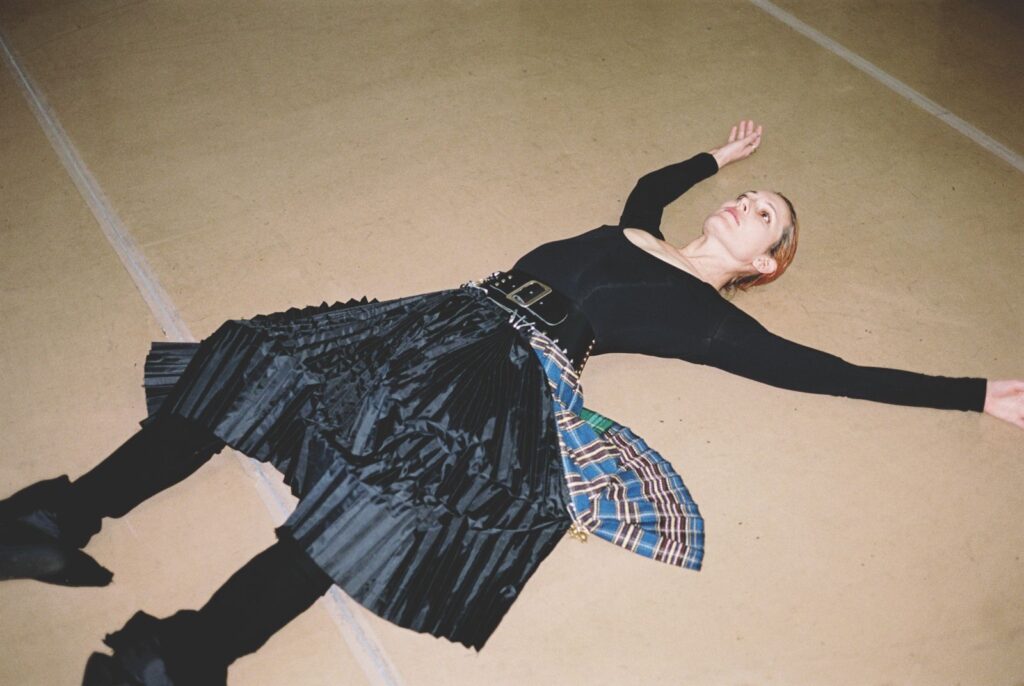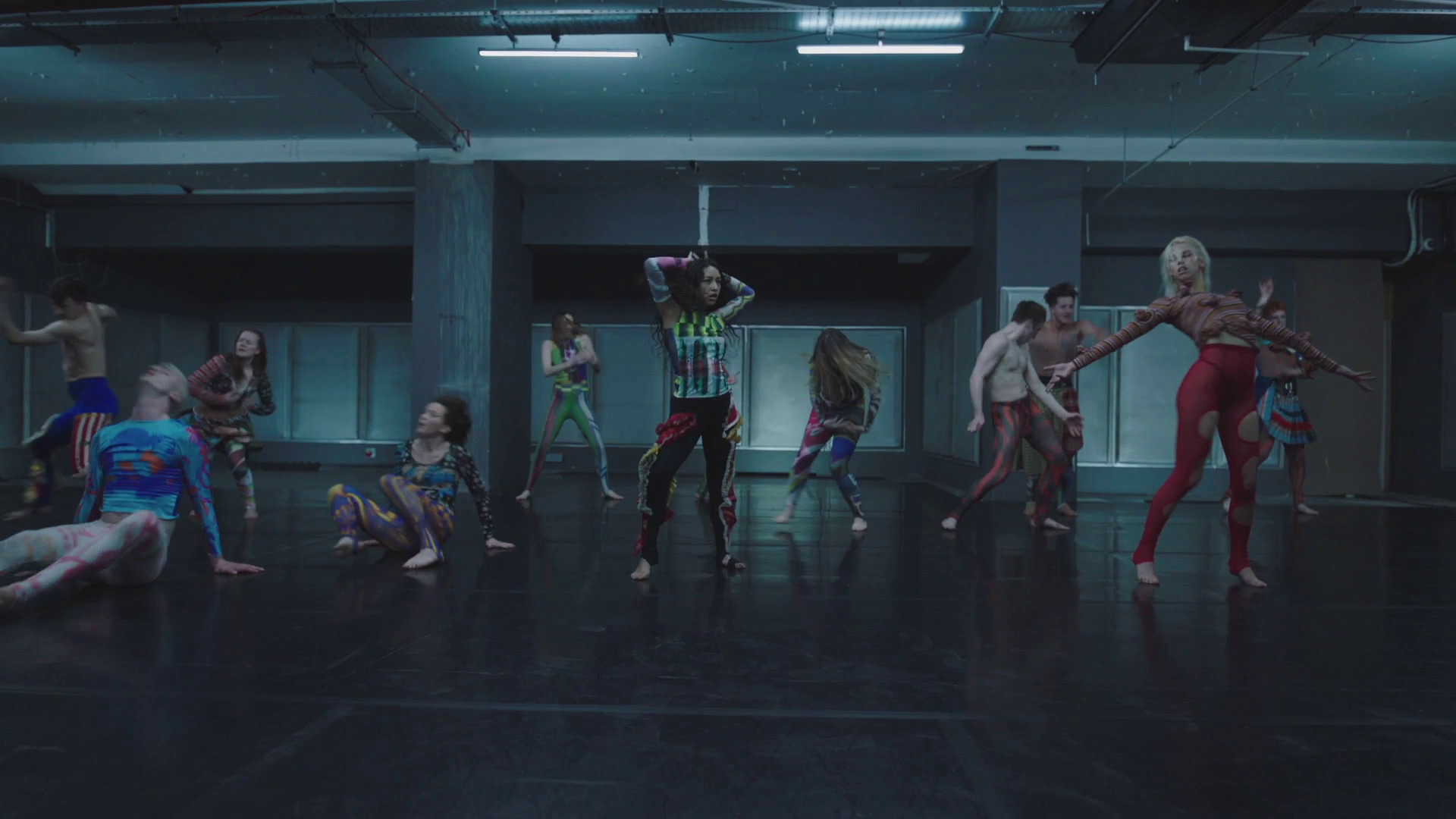Words by Georgia Howlett.
Holly Blakey’s upcoming premiere features two distinct works: Phantom and A Wound with Teeth reflect a new era, albeit an unplanned one, in her choreographic career. I spoke to Holly about the creative processes of creating the two works, that are deeply rooted in her personal life experiences while continuing to explore social, folkloric dance.
Phantom was created on London Contemporary Dance School students when their post graduate company EDGE still existed, and due to pandemic restrictions, was later commissioned by FACT Magazine as a film. It caused quite the internet stir, which is not entirely surprising; Holly ’s work is known for being provocative. The double bill at The Southbank Centre will see the film adapted for stage, alongside A Wound with Teeth, an excerpt of a full length piece due to premiere in 2026, called Lo.
Phantom marked the first work that Holly describes as autobiographical, but was less a conscious choice, and a more an overwhelming converging of events in both her personal life, and the wider world. A miscarriage and a room of covid-masked dancers was the crucial combination that dictated the themes of the film. “I didn’t tell the dancers about the miscarriage, but before I knew it I was making this pounding ritual dance,” Holly says.
The film is a 12 minute long, raging ritual, accompanied by Gwilym Gold’s distorted guitar that stirs restless dancers through space. In costumes by Chopova Lowena, hybrid creations of retro sportswear and Bulgarian folklore, the cast flaunt vibrant colours, an unexpected subversion of the piece’s darker themes, but simultaneously, a reference to the fruitful life these fertility rituals are believed to bring. The dancers strut and whip their hair, pulse and tremble on a line between sex and childbirth. This rite, fleshy and frenetic, leaps through the screen. Towards its climax, the dancers skip in a circle, holding out their palms as if in offering. It is a primal, committed conjuring of something that devastatingly, never arrives.
“I really love the work and the experience, and I learnt so much in that catharsis and that unearthing of my soul to try and create something; I’d never done it before. It gave me some courage, and that’s why I ended up creating A Wound with Teeth,” she continues.
Holly also reflects warmly on the new love she has found for Phantom in its transition from film to stage, and I wonder how the work will land, and be received, in this changed context. As an artist, Holly has for many years smoothly navigated between film and fashion; does she draw on these forms in creating access points to her dance work? One only has to think of Rambert’s Peaky Blinders to see how the dance sector takes advantage of the screens wider commercial appeal. Holly’s first work for The Southbank Centre, Some Greater Class (2015) explored the viewpoint that work made for mass audiences possess intrinsically less value, the logic that gives a diamond its worth; only the lucky few can own them. Holly admits to loving beautiful things – her collaborations include Burberry and Dior to name a few – but dance, she feels, has a responsibility to offer open arms. “It should be like a beautiful book. When you read it, you’re convinced it was written about you. I just want people to feel that they have found something in it, that it meant something.”
The second work, A Wound with Teeth (AWWT) explores memory, in particular, the way loss of memory can protect a body from a past trauma. For the R&D of AWWT, Holly attempted to recall an experience she had as a teenager in hospital, many details of which her mind had erased . Therapists, doctors and patients worked closely with Holly and her dancers to excavate the memory, which she believed to be fertile ground for creation. Speaking of it today, Holly reveals that it came with significant risk to her mental health. “It (the R&D) made me feel really sad, and I thought what a wonderful thing that my body had forgotten, and protected me from this stuff, and had led me into a really beautiful life.”
This process of remembering, and the consequences it brought, felt to Holly like a failure, but she made an active choice to embrace it. This decision is evident also in her resistance to the pressures around constantly generating, around looking a certain way. Failure, therefore, became a big theme in our conversation, but far from any negative sense of the word. “What I wanted to do was continue to forget, I wanted to fail, I wanted the body to shut down as it had.”

I wondered if in embracing failure and also accepting that no work is ever complete, Holly feels resilient against negative opinion. When asked how she reconciles bad reviews with staying integral to the work she wishes to create, Holly did not deny how painful they are to hear. “If you think the work is great, you don’t care. If you know you haven’t achieved it, it’s fucking agony. But every time I haven’t felt like I’ve been able to get to where I want to be, I just fucking do it again until I get it.”
Holly’s creations reflect the investment that takes place in this art form, the unearthing of self that in many ways, for her, has only just begun, and the bravery to share this process. Just as the self is always in flux, progressing and regressing, dance is never static, nor must it always be beautiful; Holly is unafraid of exposing the uglier side to life we all experience, but perhaps are not equipped to talk about.
*
In the hope of finding healing, Holly found herself down the path of nursery rhymes, a common tongue that “much like with our memory, are both real and imaginative”. Merely discussing rhymes reminded me of the stories that leap from their lines, tales that have stayed with us since childhood, and it is these stories that are threaded into AWWT: “I do believe that all we really are, are our stories, the stories that we know”. Each of the dancers, mostly artists Holly has worked with for over a decade, have discovered their own monsters, whatever form that may take, in the creation process for this new piece.
Nursery rhymes, myths and folklore endure in our minds, carrying narratives that are not so far from our own reality as perhaps we like to think. In this sense, they are a shared language that Holly wishes to illuminate, a vessel, a way to connect us and our experiences, especially on the topic of mental health and body issues that brutally affect so many. Even if Holly ’s work divides opinion, her intention is to encourage understanding of each other through storytelling, and through movement, which wordlessly connects us all.
“I think we all have a really desperate need to find union together. Why do we even dance in the first place? Why do we find these moments of commonality and ritual? Because we desperately need to find togetherness, and we need it to have tactility, and we need it to be in real life and in the flesh. I think in moments where we are so consumed by the way our faces look and the image of what we are, more than ever we need to find homes, places in which we can be and dance together.”
Phantom and A Wound with Teeth come to Southbank Centre from 9-11 April. Get your tickets here.
